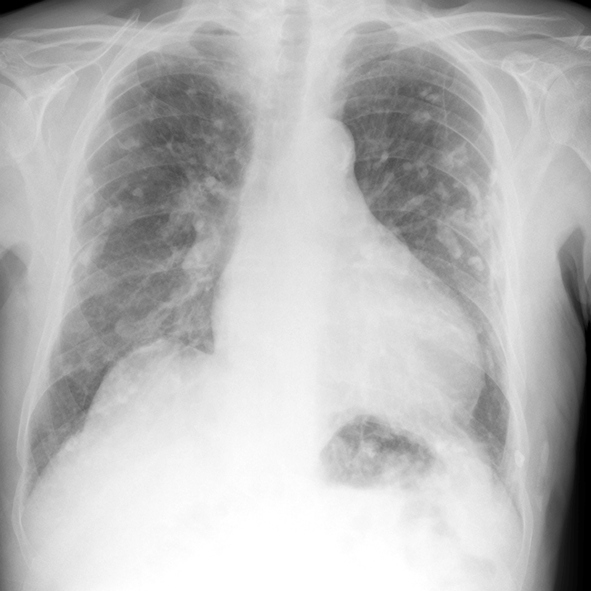Understanding Pleural Plaques

Pleural plaques are a telltale sign of past asbestos exposure. These are areas of fibrous thickening that develop on the pleura—the membrane surrounding the lungs. Though they are not cancerous and typically do not cause symptoms, their presence serves as an undeniable fingerprint of asbestos exposure.
In cases of prolonged asbestos exposure, bilateral pleural plaques (plaques present on both sides of the chest) are a strong indicator of heavy asbestos exposure. Many individuals diagnosed with asbestosis, lung cancer, or mesothelioma also have these plaques, though their presence alone does not mean a person will develop these serious diseases.
What Are Pleural Plaques?
Pleural plaques are localized areas of fibrosis on the parietal pleura, the outer lining of the lung cavity. These plaques usually appear 10 to 40 years after initial asbestos exposure, making them a late-stage marker of exposure history. While they do not necessarily impair lung function, their presence confirms that an individual has inhaled asbestos fibers at some point in their life.
Key Characteristics of Pleural Plaques
- Fibrous Thickening: Made up of collagen fibers, which sometimes become calcified.
- Location: Found on the diaphragmatic pleura (lower lung area) and costal pleura (lining the ribcage).
- Bilateral Presence: Strongly associated with heavy asbestos exposure when seen on both lungs.
- Slow Progression: Develops over decades and remains stable.
While some individuals with pleural plaques experience mild chest discomfort, most remain asymptomatic. Their discovery is often incidental during chest X-rays or CT scans performed for unrelated reasons.
How Do Pleural Plaques Indicate Asbestos Exposure?
Asbestos fibers are microscopic and airborne, easily inhaled into the lungs where they become embedded in lung tissue and the pleura. The body’s immune system struggles to break down these fibers, leading to chronic inflammation and scarring over time. Pleural plaques form as a reaction to these persistent fibers.
The bilateral presence of pleural plaques is particularly important in diagnosing heavy asbestos exposure. While isolated pleural plaques may occasionally appear due to other causes, widespread plaques affecting both lungs are almost exclusively associated with long-term, high-level asbestos exposure.
Pleural Plaques vs. Asbestos-Related Diseases
It is crucial to distinguish pleural plaques from asbestos-related diseases like asbestosis, lung cancer, and mesothelioma. While pleural plaques themselves are benign, they are often seen in individuals who later develop these conditions.
Who Is at Risk for Developing Pleural Plaques?
Occupational Exposure
Workers who have been exposed to asbestos in high-risk industries are the most affected. These include:
- Construction workers (especially before the 1980s)
- Shipyard workers
- Boilermakers and pipefitters
- Auto mechanics (handling asbestos brake pads)
- Insulation workers
Environmental Exposure
Even non-occupational exposure can lead to pleural plaques. People who lived near asbestos mines or had secondary exposure (such as family members of asbestos workers who carried fibers home on their clothing) may develop plaques decades later.
Latency Period
Pleural plaques develop 10 to 40 years after exposure, meaning individuals exposed in the 1970s or earlier are now being diagnosed. This long latency period makes it essential for at-risk individuals to undergo regular medical screenings.
Diagnosing Pleural Plaques
Imaging Tests
Since pleural plaques do not cause obvious symptoms, they are usually detected through:
- Chest X-rays: Often reveal thickened areas along the pleural lining.
- CT Scans: More detailed imaging can confirm calcification, a common feature of plaques.
Differentiating from Other Conditions
Doctors may need to rule out pleural effusions (fluid buildup), pleural thickening, or mesothelioma to ensure the plaques are not part of a more serious asbestos-related disease.
Do Pleural Plaques Increase the Risk of Cancer?
The presence of pleural plaques alone does not increase cancer risk, but it confirms asbestos exposure, which is a well-established carcinogen. Individuals with pleural plaques should be monitored closely for signs of asbestosis, lung cancer, or mesothelioma.
Factors that increase risk include:
- Heavy and prolonged asbestos exposure
- Smoking (which drastically increases lung cancer risk in asbestos-exposed individuals)
- Personal or family history of asbestos-related diseases
Management and Monitoring of Pleural Plaques
Medical Surveillance
Even though plaques are benign, individuals diagnosed with them should undergo regular check-ups to detect any emerging lung conditions early.
- Annual Chest Imaging for at-risk individuals
- Lung Function Tests to monitor breathing capacity
- Smoking Cessation Programs to reduce cancer risk
Pleural plaques, particularly bilateral pleural plaques, act as a biological fingerprint of asbestos exposure. While they are not a disease themselves, their presence confirms a history of asbestos inhalation, which could increase the risk of developing serious conditions. If you or someone you know has been exposed to asbestos, regular medical screenings and early detection remain the best defense against potential asbestos-related illnesses.
Frequently Asked Questions
What are pleural plaques, and are they dangerous?
Pleural plaques are benign areas of pleural thickening caused by asbestos exposure. They are not dangerous by themselves but serve as markers of past asbestos inhalation.
Can pleural plaques turn into cancer?
No, pleural plaques do not become cancerous. However, individuals with plaques should be monitored for asbestos-related diseases like lung cancer and mesothelioma.
How are pleural plaques diagnosed?
They are typically found through chest X-rays or CT scans performed for other reasons. CT scans provide more detail, especially for detecting calcified plaques.
Do pleural plaques affect lung function?
In most cases, pleural plaques do not impair lung function. However, extensive pleural thickening can sometimes cause mild breathing restrictions.
Is there any treatment for pleural plaques?
No treatment is necessary for pleural plaques, but regular medical monitoring is recommended to detect any asbestos-related lung diseases early.
Can I claim compensation for pleural plaques?
Depending on your country’s regulations, you may be eligible for compensation if pleural plaques result from occupational asbestos exposure.
